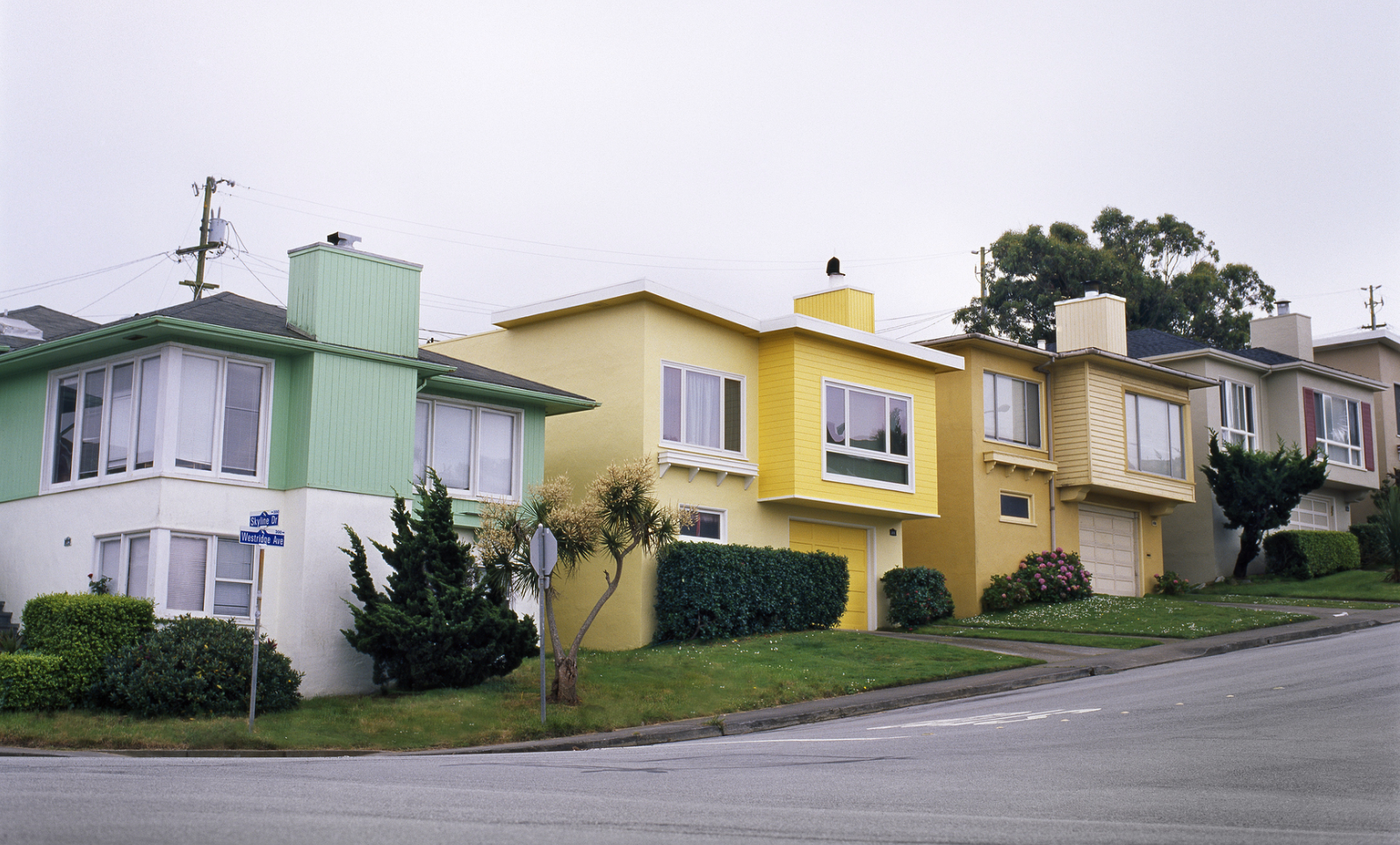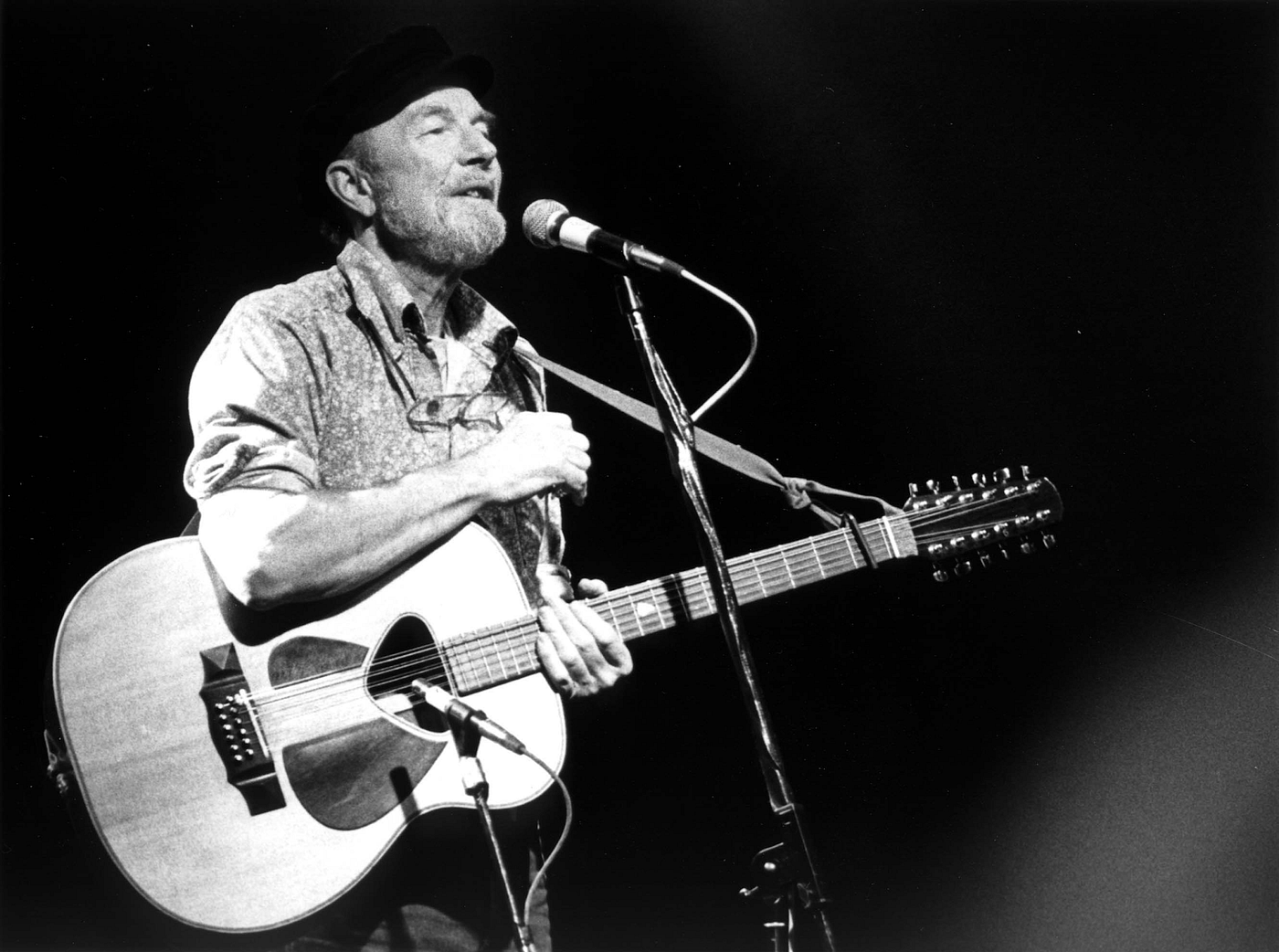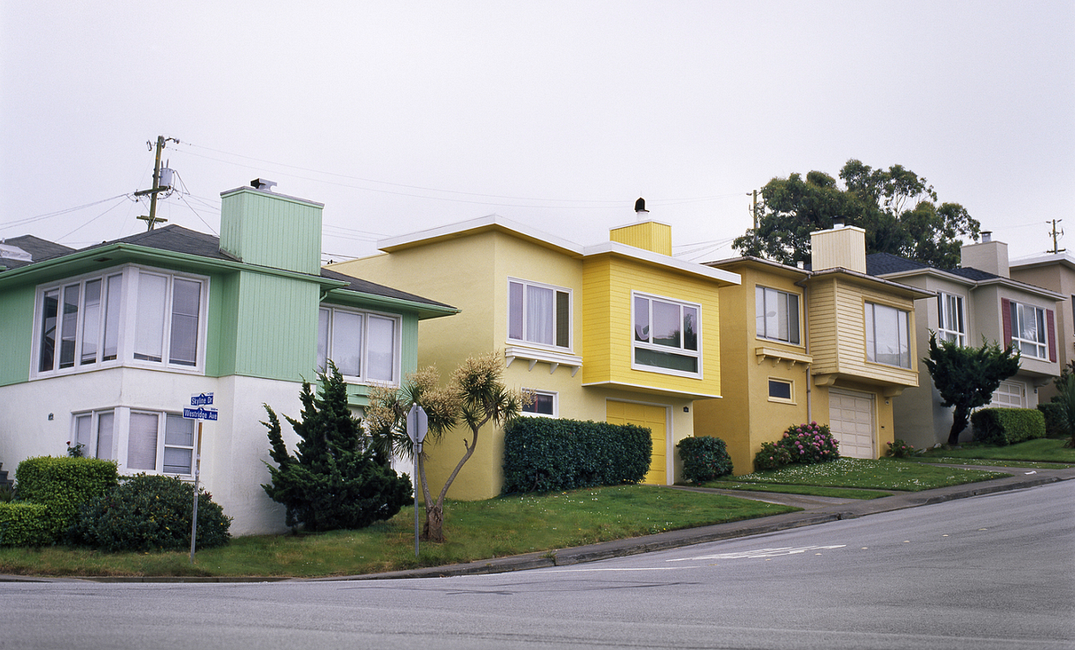
In 1962, Daly City was the inspiration for the song “Little Boxes.” Written by folk singer Malvina Reynolds, the song became a hit for Pete Seeger. It’s a relatively obscure song today, but it continues to make pop culture appearances — for example, as the theme song to the television show Weeds. It’s also the go-to song for poking fun at suburbia, which explains why it has been covered by Elvis Costello, Ben Folds, Devendra Banhart, Death Cab for Cutie, and other bands over the years.
On the surface, “Little Boxes” nails Daly City. “Little boxes on the hillside. Little boxes made of ticky tacky. Little boxes all the same.” Even if you’ve never heard the song before, I’ll bet these words have popped into your head while driving down the 280 through Daly City. “There’s a pink one. And a green one. And a blue one. And a yellow one. And they’re all made out of ticky tacky, and they all look just the same.”
Nailed it.
Malvina Reynolds’ “Little Boxes”
But the moment the song takes us inside the little boxes and starts generalizing about the people on the hillside, the lyrics paint an entirely false picture. I was renting a room in Daly City the first time I heard the song, so I can say from firsthand experience that unlike the houses, the current residents of Daly City are not homogeneous — far from it.
In the 1960s, by succinctly and humorously mocking Daly City’s tract housing, “Little Boxes” became an anthem to anti-middle-class conformity. The point was that when you mass-produce all these homogeneous houses, you’re going to end up with a society of mass-produced middle-class zombies.
You can imagine watching the all-white families coming and going from their newly built tract houses and thinking, “This bland architecture sure has produced some bland people.”
I agree with Malvina Reynolds on the tract-housing point. Despite efforts by SFGate to characterize Daly City’s houses as “the other painted ladies,” it’s impossible to look at Daly City’s architecture as anything other than incredibly homogeneous and generally bland.
Let’s face it—tract housing is lame. At the end of the day, we’re talking about an urban-planning scheme that exists primarily for the sake of cost efficiency. No one developing tract housing is terribly concerned about culturally enriching the human experience. In fact, tract housing takes a significant toll on the human experience. According to housing advocates, expansive single-family zoning has led to a shortage of residential construction, increased rents, and increased homelessness — problems all too familiar in California. There are even evolutionary reasons why tract housing isn’t ideal. As evolutionary psychologists explain, suburbia unnaturally deprives humans of social contact and fails to provide well-defined spaces that are conducive to mental health.
So there’s plenty about tract housing to ridicule. But what does Reynolds have to say about Daly City residents? They “all went to the university… And they all play on the golf course and drink their martinis dry… And the boys go into business and marry and raise a family in boxes made of ticky tacky, and they all look just the same.”
Upon entering to view the room, I found myself in a vibrant house filled with the arts and colors of the Philippines. Every detail of the place was a far cry from sterile, safe suburbia.
To be fair, back in the 1960s, this description was presumably accurate. In particular, the Westlake neighborhood in Daly City was originally a whites-only suburb after the misguided fashion of Levittown, New York. You can imagine watching the all-white families coming and going from their newly built tract houses and thinking, This bland architecture sure has produced some bland people.

Over the past 60 years, the architecture hasn’t changed, but the people have. Daly City is one of the most densely populated cities of its size in the U.S. As of the 2010 census, the population was nowhere near homogeneous: 55.6% Asian, 23.6% white, 23.7% Hispanic or Latino (of any race), 3.6% African American, 0.8% Pacific Islander, 0.4% Native American, 11.1% from other races, and 4.9% from two or more races. Daly City notably has the highest concentration of Filipino and Filipino Americans of any comparably sized city in North America.
I’ve seen tract housing in many cities. I’ve seen the conformity of suburbia. Daly City is not that. When I moved to the Bay Area in 2015, I was grateful to find a relatively inexpensive room to rent that was close to my new job. I had no expectations when I drove to Westlake and parked outside one of the colorful houses lining the sleepy, fog-covered street by the ocean. Upon entering to view the room, I found myself in a vibrant house filled with the arts and colors of the Philippines. Every detail of the place was a far cry from sterile, safe suburbia. The owner of the house was a photographer and gardener. His wife worked in real estate. They rented several rooms in their house, and each roommate was anything but cookie cutter.
I lived in that house for about two years and never once had what you might call a suburbia-typical day. The people I met casually were from all over the world. Almost everyone spoke multiple languages — and usually English was their second. I’m sure there are still people in Daly City who go to the university, golf, and drink dry martinis, but I never met anyone who fit within that mold.
Daly City once stood out as a model for middle-class conformity. But that time has passed. Despite its architectural conformity, it now serves as a model for diversity and multiculturalism. During Daly City’s transformation over the last few decades, it appears that America has followed this same trend. Across the country, majority-white neighborhoods have declined substantially. As a result, Malvina Reynolds’ “Little Boxes” song is no longer as accurate today as it was in the 1960s, but I’d say that that’s quite good news.







